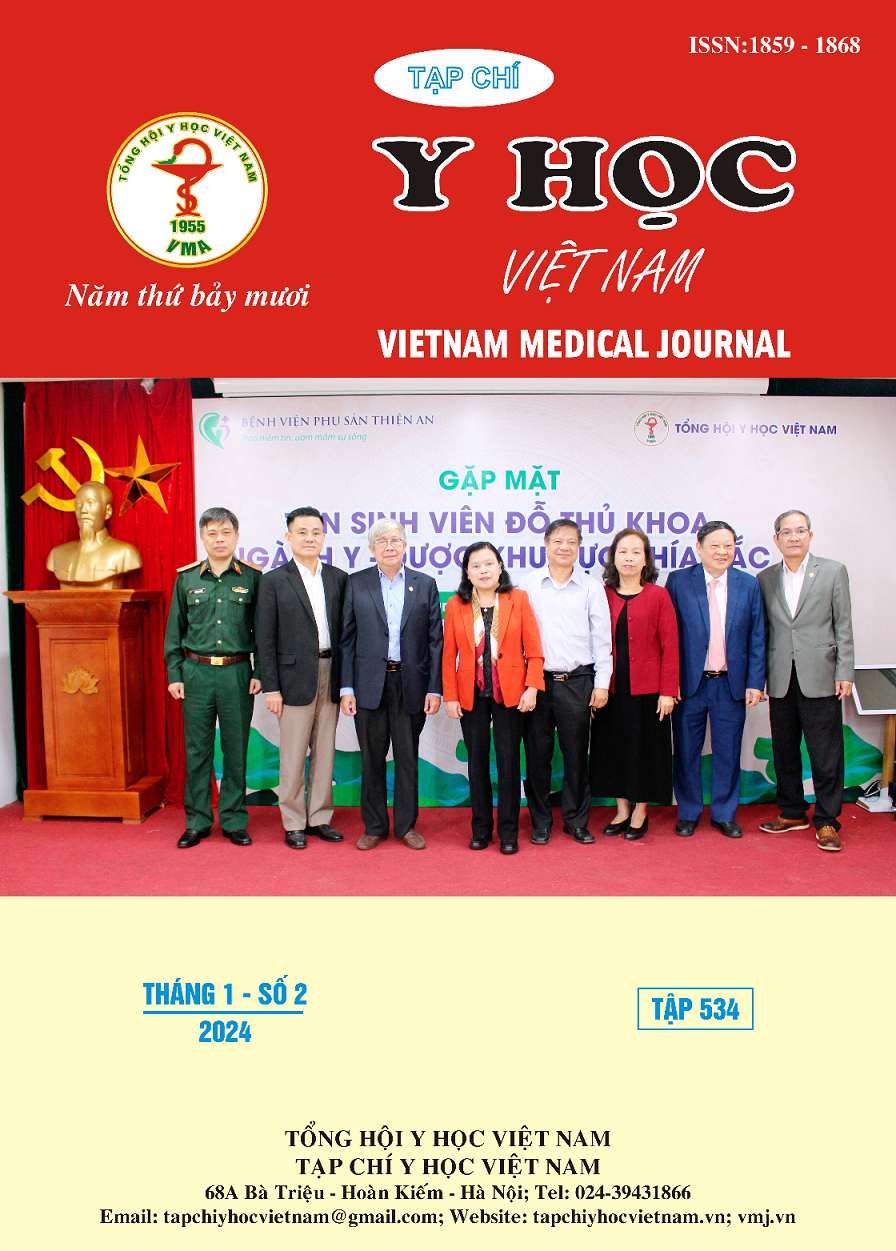COMPARING THE CORRELATION OF SEVERAL HEMODYNAMIC INDICES MEASURED NONINVASIVELY BY ELECTRICAL CARDIOMETRY WITH THE THERMODILUTION METHOD IN SEPTIC SHOCK
Main Article Content
Abstract
Objective: To determine the correlation and agreement of various hemodynamic indices measured using the non-invasive Electrical Cardiometry (EC) method compared to the thermodilution (TD) method in septic shock patients. Methods: A prospective cross-sectional study was conducted in the Intensive Care Unit II at Viet Duc Hospital from March 2023 to September 2023. The studied indices included cardiac index (CI), stroke volume variation (SVV), and systemic vascular resistance index (SVRI). Thirty septic shock patients were simultaneously monitored hemodynamically using both methods, with 170 pairs of data points recorded at predefined time intervals. Results: The Pearson correlation coefficients (r) for CI, SVV, and SVRI measured by both methods were 0.848, 0.625, and 0.846, p < 0.001. Conclusion: CI, SVV, and SVRI measured by the EC method had good correlation and agreement with TD measurements in septic shock patients. The use of the EC method to monitor CI and SVRI to replace the TD method in clinical practice is appropriate. Currently, we do not recommend using the EC method to measure SVV to replace the TD method.
Article Details
References
2. Malik V., Subramanian A., Chauhan S., et al. (2014). Correlation of Electric Cardiometry and Continuous Thermodilution Cardiac Output Monitoring Systems. World Journal of Cardiovascular Surgery, 4(7), 101–108.
3. Nguyễn Bá Tư (2022). Đánh giá vai trò theo dõi huyết động và hướng dẫn điều trị của phương pháp đo điện trở lồng ngực ở bệnh nhân sau mổ tim hở. Luận văn Thạc sỹ y học, trường Đại học Y Hà Nội
4. Nguyễn Hữu Hồng Quân (2022). Giá trị tiên lượng mức độ nặng của bệnh nhân sốc nhiễm khuẩn bằng chỉ số nước ngoài phổi. Luận văn Thạc sỹ Y học, Đại học Y Hà Nội.
5. Raue W., Swierzy M., Koplin G., et al. (2009). Comparison of electrical velocimetry and transthoracic thermodilution technique for cardiac output assessment in critically ill patients. Eur J Anaesthesiol, 26(12), 1067–1071.
6. Critchley L.A. and Critchley J.A. (1999). A meta-analysis of studies using bias and precision statistics to compare cardiac output measurement techniques. J Clin Monit Comput, 15(2), 85–91.
7. Mackenzie J.D., Haites N.E., and Rawles J.M. (1986). Method of assessing the reproducibility of blood flow measurement: factors influencing the performance of thermodilution cardiac output computers. Br Heart J, 55(1), 14–24.
8. Heringlake M., Handke U., Hanke T., et al. (2007). Lack of agreement between thermodilution and electrical velocimetry cardiac output measurements. Intensive Care Med, 33(12), 2168–2172.


